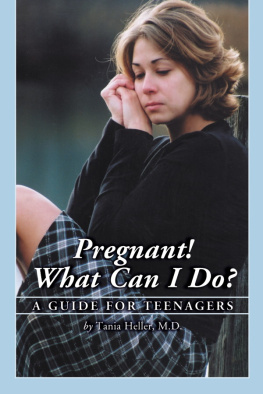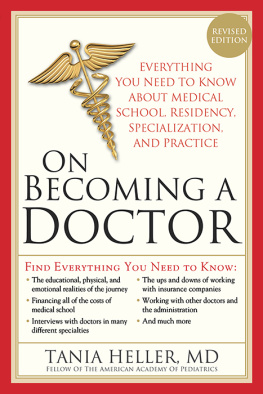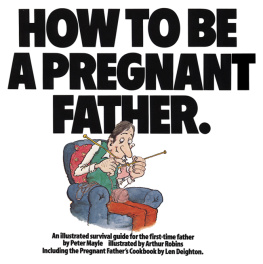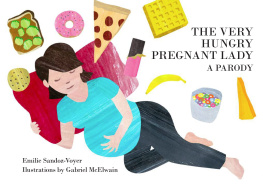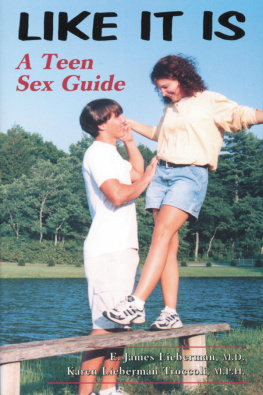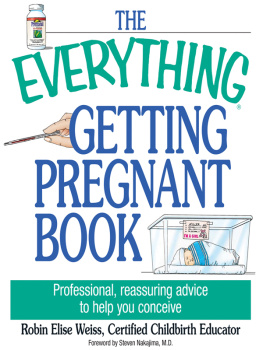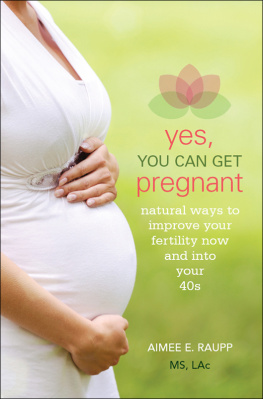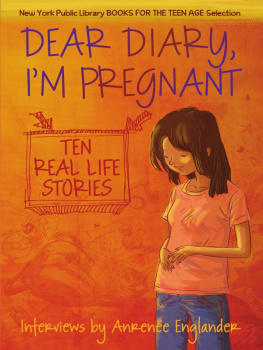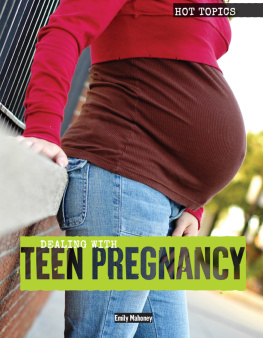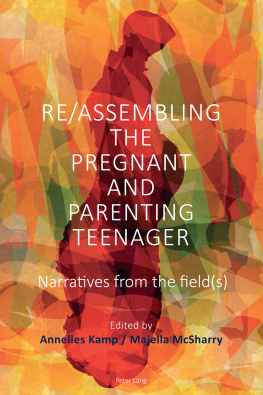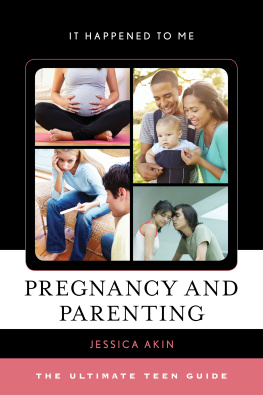
Contents
To my husband Sam and my children Daniel and Ariel,
who teach me so much about parenting every day
Preface
I still remember as if it were yesterday, the day one of my classmates in tenth grade disappeared from high school with no good-byes. Only years later did I discover that she had been pregnant and had been taken out of school in shame to parent the baby, or have an abortion? I may never know. She left no forwarding address. Those were the only options spoken about in those days, certainly amongst high school girls and boys. The idea of a third option never entered my mind. Although adoption was usually more common a generation ago it was often done secretly and almost never as an open adoption. There was usually no contact between the birthparents, adoptive parents and child.
As a pediatrician Ive treated children and young adults for almost 20 years. During that time Ive seen many teenagers with unwanted pregnancies, and not much has changed. The teenage pregnancy and abortion rates were (and still are) too high, and perhaps because of shame and embarrassment, not much is spoken about a third option, namely adoption.
I wrote this book to present, without judgment, all three options available to pregnant teenagers. In this book I also strongly emphasize the prevention aspect; i.e., preventing an unwanted pregnancy with its consequences. Last but not least, I provide an easy-to-read guide to the decision-making process and where to go for help, and discuss the importance of taking care of yourself physically and mentally during pregnancy.
I am grateful to my parents, Izzy and Zelda Heller, and my grandmother Fay Dektor, for their love and support.
Thank you to Heather Boonstra and Rachel Jones at the Alan Guttmacher Institute, Caren Hiser at Adoptions Together, and psychiatrist and author Dr E. James Lieberman. A special thanks also to my patients, and to all the pregnant teenagers who were willing to share their life stories with me. I have changed their names in order to protect their privacy.
Introduction
Adolescence is a time when you are faced with important decisions about your education, career, sexual relationships and possibly marriage. Your decisions are influenced by your family and friends, as well as by social and economic circumstances. The choices you make now will strongly affect the rest of your life, including your educational achievement and employment opportunities.
When is one ready for parenthood? Any parent will tell you that true commitment and strength are required to bring up a child. Most adolescents, by virtue of the emotional and physical changes that they are going through and struggles they must face, are not ready to make that commitment. It is certainly not an ideal time to be taking on the full responsibility of another human being.
That having been said, in the United States, just under a million adolescent women become pregnant each year. About three quarters of teenage pregnancies are unintended, and more than a quarter end in abortion. Only a small percentage of pregnant teenagers opt for adoption. Although the 1990s saw a definite decline in teenage pregnancy rates and birth rates (Family Planning Perspectives, Vol. 32, no. 5, Sept./Oct., 2000, and National Center for Health Statistics) the United States teen pregnancy rate is still one of the highest in the developed world.
Most American teenagers have sex for the first time between the ages of 15 and 17. More than a third of ninth graders and two thirds of 12th graders have had sexual intercourse (A.A.P. Pediatrics Nov., 1999). Several factors contribute to the high rate of teenage sexual activity and teenage pregnancy. Personal factors, such as low self-esteem, family factors including lack of discipline and overly permissive parenting, societal factors, such as lack of education (including contraceptive education), and our permissive society, all play a role.
There is good news too. Between 1990 and 1997, the teenage pregnancy and birth rates fell significantly. The decline in teenage pregnancy is thought by some to be due to increased abstinence or increased contraceptive use, by others to a fear of HIV, and by yet others, to a combination of the above.
Discussion of premarital sex, pregnancy and abortion engenders strong personal feelings in most individuals. In this book I try to present the facts in an unbiased and nonjudgmental manner, respecting the readers personal beliefs and legal rights.
1
Whats the problem?
When looking at the major problems our society faces, certainly teenage pregnancy, abortion and sexually transmitted disease rank high on the list. What is the scope of the problem and why do we spend so much time looking at these issues?
Every year almost one million teenagers become pregnant in the United States. In fact the teenage pregnancy and teenage birth rates in the U.S. are higher than in any other industrialized country in the world. Adolescent pregnancy carries with it a large number of problems for the teenager and her partner, their families and society.
More than three quarters of the teenage pregnancies in the U.S. each year are unplanned and unintended. It is sad to note that whereas the birth rate for married women is about ten times the abortion rate, in unmarried women the birth and abortion rates are nearly equal. Induced abortion is the most commonly performed surgical procedure in the United States.
There is some good news. The teenage pregnancy rate dropped significantly between 1988 and 1996 and in that same time period the teen abortion rate dropped by 33 percent. However the numbers are still too high. Although studies indicate that most younger teenage girls are not sexually active, by 17, more than half have had sexual intercourse, and a sexually active teenager who does not use contraceptives has a 90 percent chance of becoming pregnant within a year.
Younger teenagers having sex for the first time usually use a condom. When sexually experienced teenagers use contraception, the method most commonly used is the oral contraceptive pill (44 percent), followed by the condom. A smaller number rely on other methods, including the injectable, the withdrawal method, the diaphragm, the sponge and the implant. However, many teenagers practice contraception sporadically or not at all. (Refer to Chapter 9 for more information about contraception.)
Besides unplanned pregnancy, teenagers face the threat of sexually transmitted diseases. Teenage women are at higher risk than older women of acquiring such diseases. Every year three million teenagersabout one in four sexually experienced teenagerscontracts at least one sexually transmitted disease. These include gonorrhea, genital herpes, chlamydia, human papillomavirus, syphilis and HIV amongst others. There is a very high incidence of chlamydia in sexually active teenagersas high as about 10 to 30 percent in some settings. Complications of chlamydia and gonorrhea include pelvic inflammatory disease, infertility and ectopic pregnancy. Teenage women have a higher hospitalization rate than older women for acute pelvic inflammatory disease. It is important to be aware that women with chlamydia may have no symptoms at all, but still develop serious complications, so you must be tested for this infection if you are sexually active. Other sexually transmitted infections, too, are very prevalent amongst teenagers. One quarter of all new HIV infections occur among 13- to 21-year-olds (Office of National AIDS policy, 1996).
The cost of treating the complications of sexually transmitted diseases is very high. Approximately four to five billion dollars are spent each year (Lappa & Moscicki, Dec., 1997). Although there are some costs incurred in preventing sexually transmitted diseases, they are not nearly as high as treating them.
Next page
